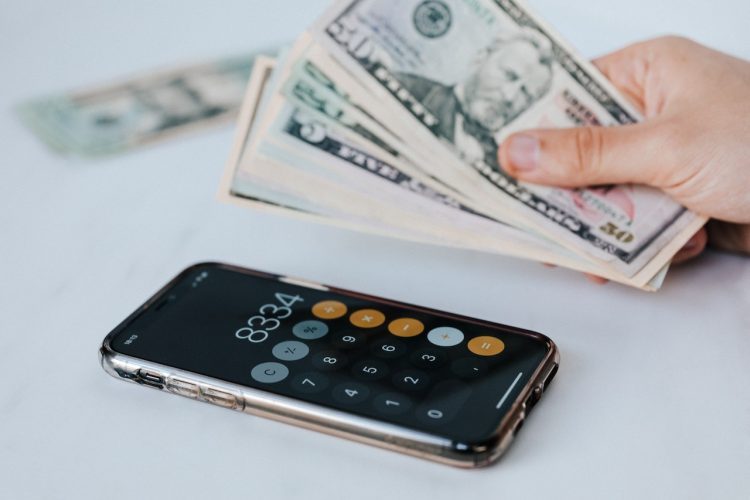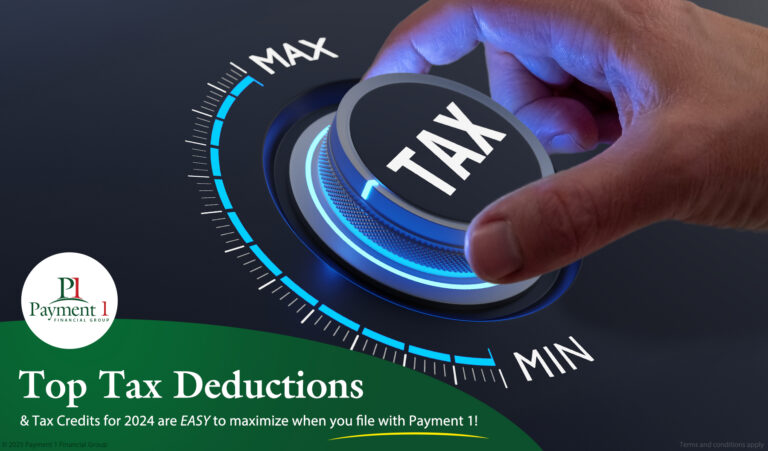Personal Loans Pros and Cons: Top Things to Consider

Personal loans are undoubtedly beneficial and could help someone financially as long as it is used the right way. However, it could be a burden for some — a tool that would bury them deeper into debt instead of helping them out of a tight financial spot.
This article will dive into what personal loans are, what they are suitable for, the pros and cons of personal loans, the alternatives, and how to apply.
What is a personal loan?
A personal loan is an installment loan that gives you a fixed amount that you can borrow. This usually ranges from $1,000 to $50,000 or even $100,000, depending on several factors. Most personal loans also do not need collateral. This means you don’t have to put something up as security to ensure you pay back the loan. Some lending institutions also allow you to take out more than one personal loan as long as you meet their requirements.
When is a personal loan a good idea?
- – You are going to use the funds for necessary expenses. For example, you need funds for vehicle repair. A personal loan would be a good idea, mainly if you use your vehicle for work or business.
- – You need the funds as soon as possible. Many lenders, especially those you can transact business with online, can have the funds available to you in a matter of days.
- – You plan on paying high-interest loans with it. You can use a personal loan to your advantage by using it to pay off debts that incur higher interest rates.
- – Your credit score is strong. If your credit score is outstanding, you can take out a personal loan with a lower interest rate.
When is a personal loan a bad idea?
- – You are an overs-pender. If you plan on paying off your credit card debt with the personal loan proceeds but would end up building your debt the next month, then taking out a personal loan may not make sense.
- – You don’t have an urgent need for the money. Taking out a personal loan to have money lying around may not be a good idea. You risk spending the extra money on unnecessary items, then pay off the debt plus interest over months or years.
- – You will not be able to pay the monthly payments. Use free loan calculators in banks and lenders’ websites to determine whether you can afford to pay the monthly payments for the loan you plan on taking.
What are the pros and cons of personal loans?
Understanding loan pros and cons are essential before taking any step further. Many unique loan pros could sway you into taking one out. But when it comes to finances, making smart, well-thought-of decisions can save you a lot of headaches in the future. Knowing more about the advantages and disadvantages of personal loans can help you shop for a lender and outweigh the risks involved.
Personal loan pros
Flexibility
Personal loans can be used for various things. Unlike home and car loans, you can use personal loans for whatever financial reason. For example, you can take out a personal loan to fund your dream vacation. Or you can take a more practical approach and use your personal loan proceeds to do some minor home repairs or even to pay off multiple debts that are higher in interest. You can even use it to pay off your bills. Whatever financial lack you find yourself having, a personal loan can help you.
Lower interest rates
Your interest rate does not change throughout the life of the loan. And depending on your credit score, personal loan interests are generally lower. Credit card interest, on average, is around 16-17%. Personal loans have an average interest rate of about 10-11%. If you have a good enough credit score, your interest is around the 10% range. The higher your credit score, the lower your interest rate.
Lump sum
You get your loan in one large sum. This means you can pay for those repairs without staggering your payments. Or you can take that lump sum and consolidate your debt. And since you get it in one lump sum, you pay the same monthly amount. This makes it easier to fit paying the loan back into your monthly budget.
Faster funding
Most personal loans have a next-day or same-day payout. This means that once your loan is approved, you can get your funds within the day of approval or the day after. So, if you apply for a personal loan due to an immediate need, you get quick access to funds. However, it would help if you still considered the time it takes for the entire application process to be completed.
Build credit score
Taking out a personal loan can help you build your credit score. On-time loan repayments reflect positively on credit scores. As long as you pay your loan on time every month, your credit score will increase, making it easier for you to transact with financial institutions in the future. In addition, taking out a personal loan will improve your credit mix if you are not currently paying for any other installment loans. Credit mix accounts for 10% of your credit score.
Personal loan cons
Higher interest rates
We’ve talked about getting lower interest rates on personal loans as one of the unique loan pros. However, interest rates are still dependent on your credit standing. If you have a low credit score, you might get a higher interest rate than someone with a better credit score. Your rate depends on how good of a payer you are and the risk a lender takes in letting you borrow money that might not be paid off. Your credit score will give them insight into whether or not you are a consistently good payer.
Credit damage
Personal loans can both help you build credit and destroy your credit score. But, again, this depends on how good you are at paying your debt off. This means you must consider whether you can realistically afford the monthly payments on top of your regular bills. Missing payments and defaulting on a loan can devastate your creditworthiness. It’s best to set up autopay and reorganize your budget to ensure you meet your due payment dates monthly. Additionally, when a lender makes a hard inquiry on your credit, your scores are also affected temporarily.
Processing fees and penalties
Personal loans can come with fees taken from your total loan amount. Unsecured loans, such as private loans, can have higher processing fees than secured ones since the lender is taking a more significant risk by providing you with an unsecured loan. That means that if you take out a $10,000 loan, the money you get after the whole process will be lower than what you expect. Also, if you miss payments or are a habitual late payer, lenders might charge you a penalty fee on top of your monthly payments.
What are the alternatives to personal loans?
If you feel that a personal loans is not the right solution for you, here are a few alternatives you can look into:
Credit card
Credit allows you to get something now and pay for it little by little every month or all at once. If you pay off the debt in full at the end of the month, you won’t be charged interest. Instead of getting a lump sum amount like with personal loans, you can use the credit card as a revolving line of credit – using as much credit as your credit limit allows. Having a good credit score qualifies for lower interest rates and even 0% APR for the first 12 months in some cases.
A personal line of credit
Like credit cards, personal lines of credit can be used on an as-needed basis. You can tap on your credit line whenever you need the funds. The difference is that a personal line of credit may have lower interest rates than credit cards. However, they may also come with additional fees for maintaining the credit line.
Peer-to-peer loan
This may be an excellent alternative to a personal loan if you don’t qualify for traditional loans. Peer-to-peer (P2P) loans work like personal loans, except individual investors fund them rather than a lending institution. Investors review loan applications and determine whether they want to support the loan.
Home equity loan
This works for those who have equity in their homes. A home equity loan allows you to borrow against your home equity. You have two options:
- – Home equity loan. You take a second mortgage on your home, take a lump sum amount, and repay it every month over five to 15 years.
- – Home equity lines of credit (HELOC). This works like a credit card – you borrow against your home equity on an as-needed basis. The line of credit is backed by your home, and you’ll typically get a variable interest rate.
401(k) loan
This is another alternative for those who don’t qualify for traditional loans. A 401(k) loan allows you to borrow against employer-sponsored retirement funds. For this alternative, you don’t need to submit the required documentation or meet a minimum credit score. However, note that this may also be a costly alternative. You will end up paying income tax for the funds twice – once when you pay the money back to your retirement account and another once you withdraw your funds in the future.
How do you apply for a personal loan?
If, after weighing the pros and cons of a personal loan, it turns out to be your best bet, here’s how to go about it.
Determine the amount you need
The goal is to have the amount of money you need and be able to pay off the debt on time. Do due diligence in determining how much you need and can afford to pay monthly. Using loan calculators available online, decide how much you’re borrowing. Don’t forget to add the fees that come with the loan. Prequalifying for a loan can also give you a good grasp of how much you will qualify for and the interest rates to be applied to you.
Check your credit score and improve it if needed
You are entitled to a free copy of your credit reports every 12 months from the three major credit bureaus. Knowing your current credit score can help you decide whether to push through with the loan application or hold off for a while. If your credit score is not stellar, consider improving it by paying down credit cards or past-due accounts.
Shop for lenders and the best rates
Loan rates are typically expressed as APR or annual percentage rates. This includes the fees and other charges on loan. When you compare lenders, look closely at the rates and terms. Don’t settle for the first offer you receive without checking the other options. Most lenders allow borrowers to prequalify for a loan. This entails a soft credit check that can give you an idea of how much you can borrow and at what rate.
Pick a lender and start the application process
Lenders vary in their requirements, but you need to provide your complete name, contact details, income, employment information, and the reason for the loan. Gather the documents, such as driver’s license, payslips, proof of income, proof of residence, etc.
Take the loan offer and make payments
Once the loan is approved, you will be given a loan offer. In this document, you will see the amount approved and the monthly payments you need to make. Accept the loan offer and start planning your payments if you are okay with the terms and rates. It is advisable to enroll your monthly amortization to autopay to ensure that you don’t miss any due dates.
How do you find the best personal loan provider?
Here are a few things to consider when choosing a lending institution for your personal loans.
APRs
You will notice that lenders promote low-interest rates in their advertisements. However, expect those enticing interest rates to be reserved for those with good credit scores. If you have less-than-stellar credit, you may be unable to avail of the low-interest rate. Look for lending institutions that weigh other factors, such as job history and educational background.
Fees
Compare the fees that the lenders charge. Do they charge origination, prepayment, or application fees? These amounts add up when rolled into the loan down the road. Some lenders don’t charge application fees, or if you decide to pay off your debt early. Sift through the fee schedule to see how much the lender charges for returned or late payments.
Reviews
Consider customer experience, as well. Read up on the lender’s track record and customer service. Is their customer service available 24/7? How easily can they be reached? Do they have a physical location you can conveniently visit anytime?
Final Thoughts
Consider many things before taking out a personal loan. The biggest of which is whether or not you can afford the monthly repayments. Weigh the pros and cons of personal loans as they are a great help but can also cause credit damage if you are not careful and mindful of paying the loans back.
Find a lender that considers your budget and ability to repay your loan comfortably. And it also helps if they can help you build or restore your credit standing. Payment 1 Financial offers personal loans with flexible payment options and competitive rates to ensure that you get the best experience possible. Contact us today!




